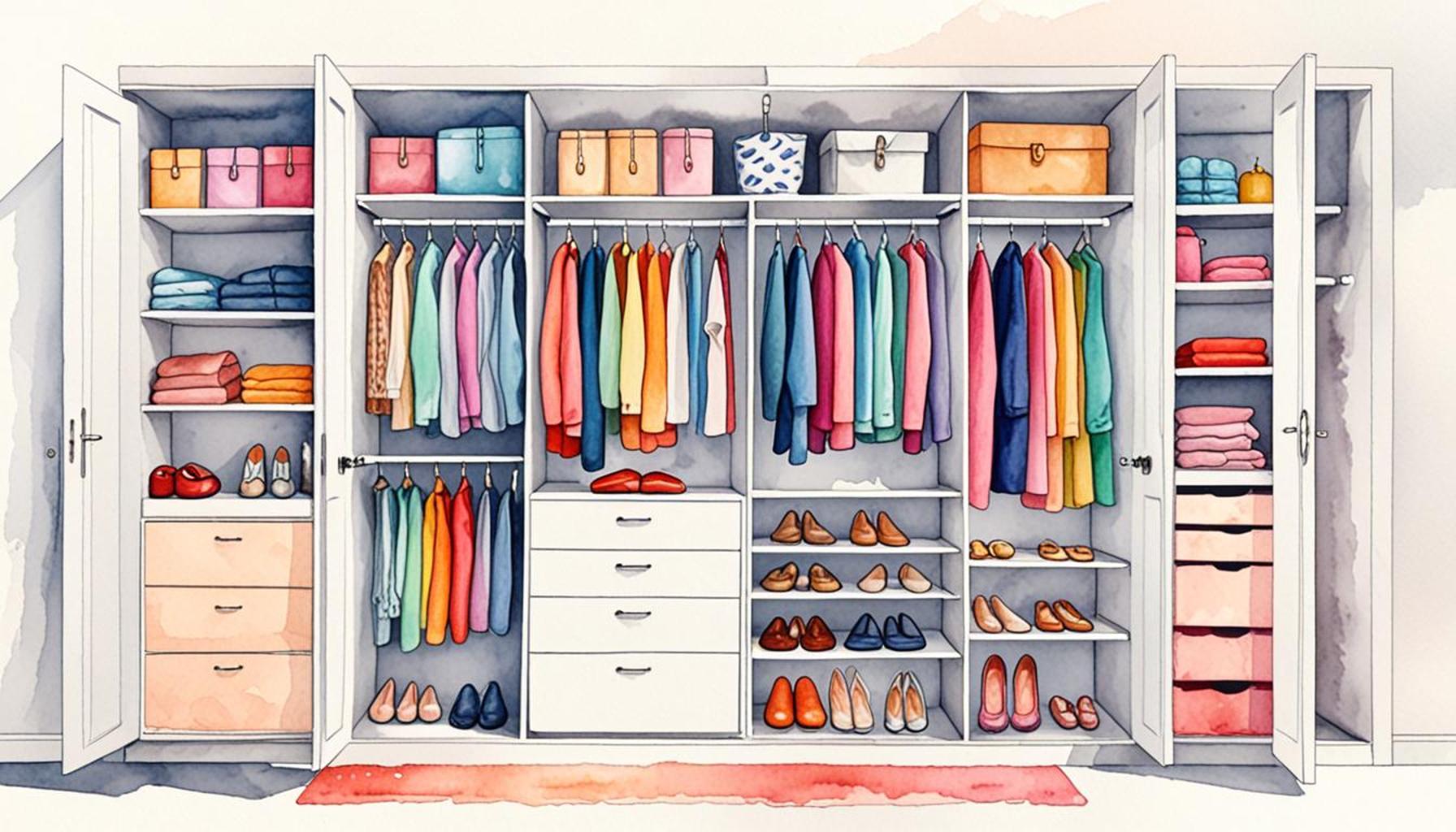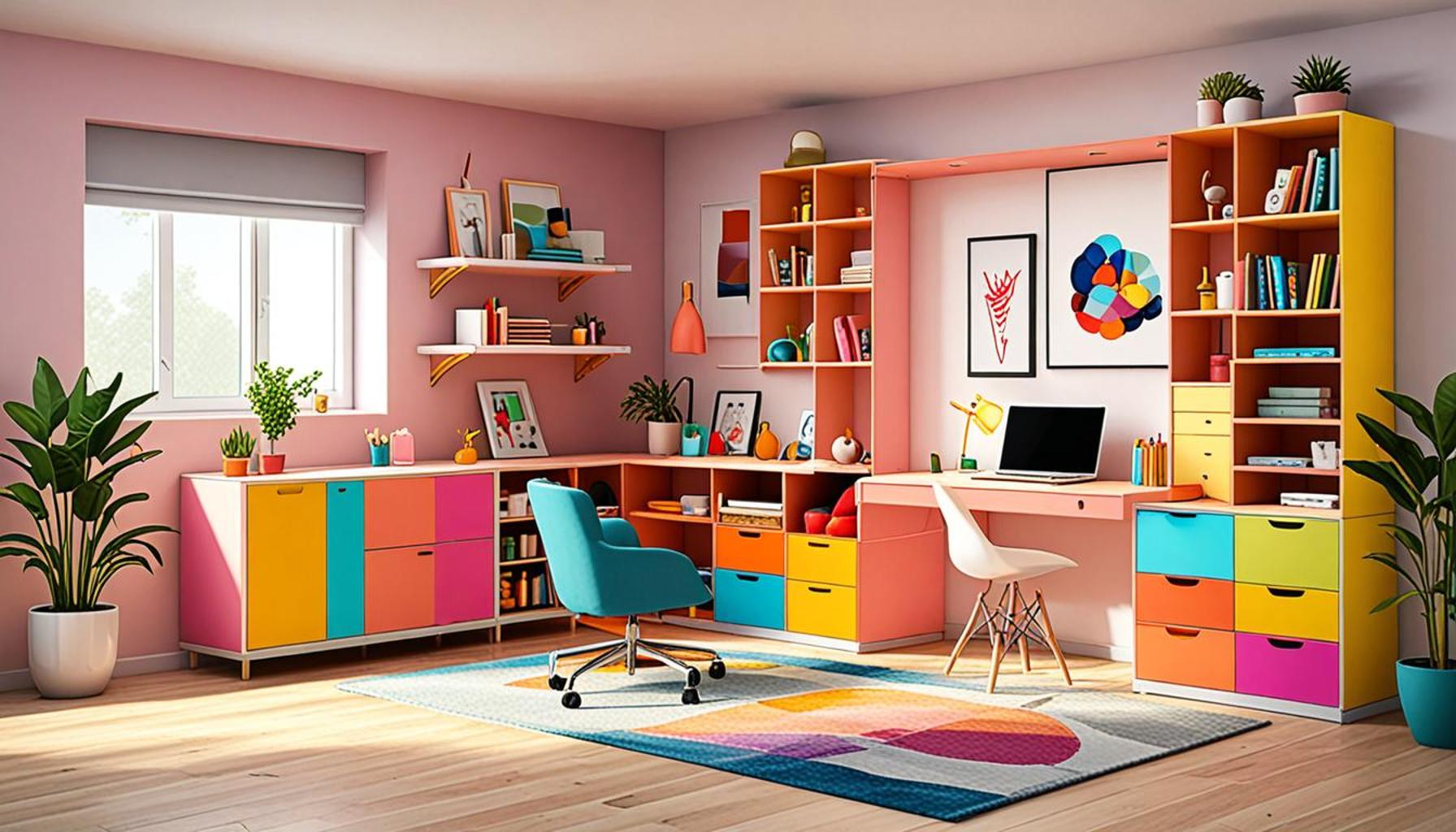Maximizing Small Spaces: Optimization Strategies for Minimalist Environments

Understanding the Importance of Space Optimization
In today’s fast-paced world, where urbanization is on the rise, many individuals find themselves dwelling in compact apartments or tiny homes. This lifestyle offers numerous advantages, such as reduced living costs and a smaller ecological footprint, but it also poses unique challenges. To thrive in these environments, one must go beyond merely storing possessions and instead focus on enhancing the purpose and functionality of every square inch.
Smart Solutions for Limited Spaces
One of the most effective methods to enhance space efficiency is through the use of multi-functional furniture. Furniture that serves more than one purpose—such as a sofa bed, an ottoman with storage, or a coffee table that doubles as a work desk—can significantly cut down on clutter and increase usability. For example, many modern sofa designs come equipped with built-in storage compartments, enabling you to keep extra blankets and pillows tucked away neatly. This innovation not only maximizes seating options but also invites a streamlined aesthetic into your living area.
Another critical strategy to consider is the incorporation of vertical storage solutions. While floor space may be limited, walls offer an untapped potential for storage and display. Wall-mounted shelves can provide an excellent solution for books, plants, or decorative items, effectively drawing the eye upward and creating an illusion of increased height. Consider the trendy pegboards that allow you to customize your storage based on your needs—the flexibility of these installations can adapt as your lifestyle changes. Over-the-door organizers are also practical additions, transforming ordinary doors into valuable extra storage areas.
The Power of Decluttering
Alongside these tangible solutions, engaging in regular decluttering is essential for maintaining an organized small space. Start by assessing each item in your home and asking whether it fulfills a genuine purpose or brings you joy. This evaluation process, often associated with Marie Kondo’s decluttering philosophy, encourages a more mindful relationship with your belongings. By letting go of items that no longer serve you, not only do you create physical space, but there is also a mental release that comes when the environment is simplified.
By exploring these innovative solutions, individuals can shift their perception of small spaces and embrace the creativity that comes with limitation. The journey toward optimizing a living environment may involve trial and error, but the end result is a functional, stylish, and inviting home. Ultimately, fostering a well-organized living area enhances daily life, encouraging tranquility and efficiency in the midst of urban chaos.
DIVE DEEPER: Click here to discover more minimalist practices
Innovative Design Techniques for Small Spaces
When it comes to maximizing small spaces, innovative design techniques play a crucial role in transforming how we interact with our environments. These techniques not only optimize functionality but also instill a sense of style and personal expression. As more people embrace minimalist living, understanding these strategies allows individuals to create homes that reflect both their needs and their aesthetic preferences.
Incorporating Built-in Features
One of the most effective ways to optimize space is by integrating built-in features. Customized cabinets or shelving units can fit snugly into nooks and crannies, eliminating wasted corners in your home. This approach not only maximizes storage but also ensures that every space has a purpose. For instance, a built-in bookshelf can be created that spans an entire wall, providing ample storage while simultaneously serving as a display area for art and personal collections. Additionally, built-in seating, such as window benches, can turn previously underutilized areas into comfort zones while providing additional storage beneath the cushions. This design element encourages informal gatherings and leisurely time spent reading. Such innovations enhance the overall layout of a small space, making it feel both functional and inviting.
Color and Lighting: Creating an Illusion
The impact of color and lighting should not be underestimated when optimizing small spaces. Lighter color palettes, particularly whites, creams, and soft pastels, can create an illusion of openness. Research shows that using these shades reflects more light, enhancing the perceived size of a room. Dark colors, while rich and sophisticated, tend to absorb light, making spaces feel smaller. For example, using a soft blue or light gray can give the feeling of an airy, expansive environment. Utilizing mirrors strategically can amplify natural light and expand visual perspectives. By placing mirrors opposite windows or incorporating mirrored furniture, such as a coffee table or accent wall, you can create a vibrant and airy atmosphere, essential for small living spaces. Furthermore, employing layered lighting—from overhead fixtures to accent lamps—can add depth and dimension, transforming any room into a well-lit and dynamic area.
Maximizing Outdoor Areas
For those fortunate enough to have access to small balconies, patios, or gardens, leveraging these outdoor spaces can significantly enhance your living area. These areas can be transformed into an extension of your home with thoughtful design choices. Some strategies include:
- Vertical gardens: Utilize walls for planters or trellises, which not only beautify the space but also improve air quality. This approach is particularly popular in urban settings, where floor space is limited.
- Outdoor furniture: Invest in compact, foldable furniture that can be easily stowed away when not in use, making for a functional yet spacious outdoor area. Brands like IKEA offer a range of options tailored to small outdoor spaces, encouraging residents to enjoy their exteriors.
- String lights: Adding lighting can create an inviting ambiance and extend the usability of outdoor spaces into the evening hours. Installing dimmable options can also help set the mood for gatherings or quiet evenings.
As you implement these advanced design techniques, remember that maximizing small spaces is as much about creativity as it is about functionality. Emphasizing thoughtful design choices can transform cramped quarters into a charming oasis, one that caters to your lifestyle and preferences. Cultivating an environment that resonates with personal tastes while employing practical solutions allows residents to thrive amidst the challenges of limited spaces.
| Advantage | Description |
|---|---|
| Space Maximization | Utilizing vertical storage options can free up floor space, allowing for more functional layouts in small apartments. |
| Multi-functional Furniture | Incorporating furniture that serves multiple purposes, like sofa beds or coffee tables with storage, increases versatility in minimalist environments. |
| Decluttering Techniques | Adopting a decluttering mindset helps maintain a clean and open aesthetic, which is crucial for maximizing space efficiency. |
In small environments, every inch matters. Implementing these strategies aids in creating a more spacious and uncluttered feel. Adopting a minimalist lifestyle not only enhances your interior but also promotes a serene atmosphere, enriching your overall living experience. These optimization techniques make it easier to embrace simplicity and functionality, leading to a truly fulfilling minimalist environment.
DISCOVER MORE: Click here for insights on emotional benefits
Smart Furnishing Solutions for Minimalist Living
As we delve deeper into optimization strategies for minimalist environments, the role of smart furnishing solutions becomes increasingly important. Instead of filling a space with numerous standalone pieces, thoughtful selections can transform a small footprint into a multifunctional haven. Choosing the right furniture not only helps conserve space but also enhances the overall aesthetic of your home.
Multi-functional Furniture
Investing in multi-functional furniture is one of the best strategies for maximizing small spaces. Pieces that serve more than one purpose can dramatically improve both the functionality and style of a room. For example, a convertible sofa bed can function as both seating during the day and a bed at night, allowing you to accommodate guests without compromising on space. Nested tables are another excellent option; they can be stacked together when not in use and spread out when needed, offering flexibility in tight quarters.
Moreover, many modern designs embrace the concept of adaptability. Desks that fold up against the wall can provide a productive workspace without taking up valuable floor space when not in use. Brands like West Elm and CB2 have incorporated such designs into their collections, catering to the needs of urban dwellers who often live in compact apartments. By prioritizing functional furniture, you can maintain a tidy and organized environment without the clutter.
Creative Storage Solutions
When space is at a premium, having smart storage solutions is paramount. Traditional storage units can often take up valuable floor space, but innovative designs can help integrate storage seamlessly into your living areas. Under-bed storage is an excellent way to utilize this often-overlooked area. Bins or drawers designed to slide underneath can house everything from attire to seasonal decorations, keeping them out of sight yet easily accessible.
Additionally, furniture that features concealed storage—like ottomans or coffee tables with hidden compartments—can double the utility of these items. Similarly, wall-mounted cabinets and shelving can offer vertical storage options that draw the eye upward, creating the sense of a more spacious environment while keeping essential items organized. Consider utilizing the vertical space above doorways or windows to install shelves that can hold books or collectibles, allowing residents to showcase their personality without sacrificing square footage.
Personalizing Small Spaces
While the optimization of space is essential, individual style should not be overlooked. Personalizing your minimalist environment can help it feel more like home and less like a temporary setup. Integrating a few carefully chosen decorative elements—such as a piece of art, distinctive rugs, or vibrant throw pillows—can introduce character without overwhelming the senses. Choosing furnishings with distinct textures or patterns can create visual interest that draws the eye, making the space feel richer and less confining.
- Wall art: Large art pieces can become focal points, directing attention away from the smallness of the area. Choosing one statement piece instead of multiple smaller items can create a gallery effect that enhances the room’s depth.
- Layering textiles: Area rugs, throws, and cushions can add warmth while also serving practical functions, such as comfort or sound absorption.
In infinitely adaptable environments, underscoring personal expression through design can create a small space that feels vibrant and uniquely yours, even amidst minimalism. As you apply these smart furnishing solutions, remember that creating an efficient and enjoyable small space is a balancing act that marries functionality with personal flair, establishing a dwelling that meets the demands of modern life.
DISCOVER MORE: Click here for essential insights
Conclusion: Crafting Harmony in Minimalism
In the quest for maximizing small spaces, it becomes clear that thoughtful design and functionality are paramount. As explored in our discussion, incorporating multi-functional furniture and innovative storage solutions can significantly elevate the use of limited square footage. By selecting versatile pieces that cater to various needs, residents can create fluid environments that adapt to their lifestyles, proving that even the coziest quarters can flourish with careful planning.
Moreover, the art of personalizing small spaces adds a layer of warmth and individuality to minimalist designs. As minimalism thrives on the principle of ‘less is more,’ it allows for the inclusion of key decorative elements that speak to one’s personality, thereby transforming a mere living area into a cherished home. Whether it’s a statement piece of wall art or a strategically placed decorative rug, these touches infuse vibrancy, inviting creativity without overwhelming the senses.
Ultimately, the journey of optimizing small environments calls for a balance between practicality and style. By implementing the strategies discussed, individuals can embrace the challenge of limited space and transform their homes into havens of comfort and efficiency. As urban living continues to evolve, staying informed about new trends and innovations in minimalist design will empower you to create an ideal living environment, regardless of its size. So dive deeper into the world of minimalism, experiment with your surroundings, and discover just how expansive a small space can be.


